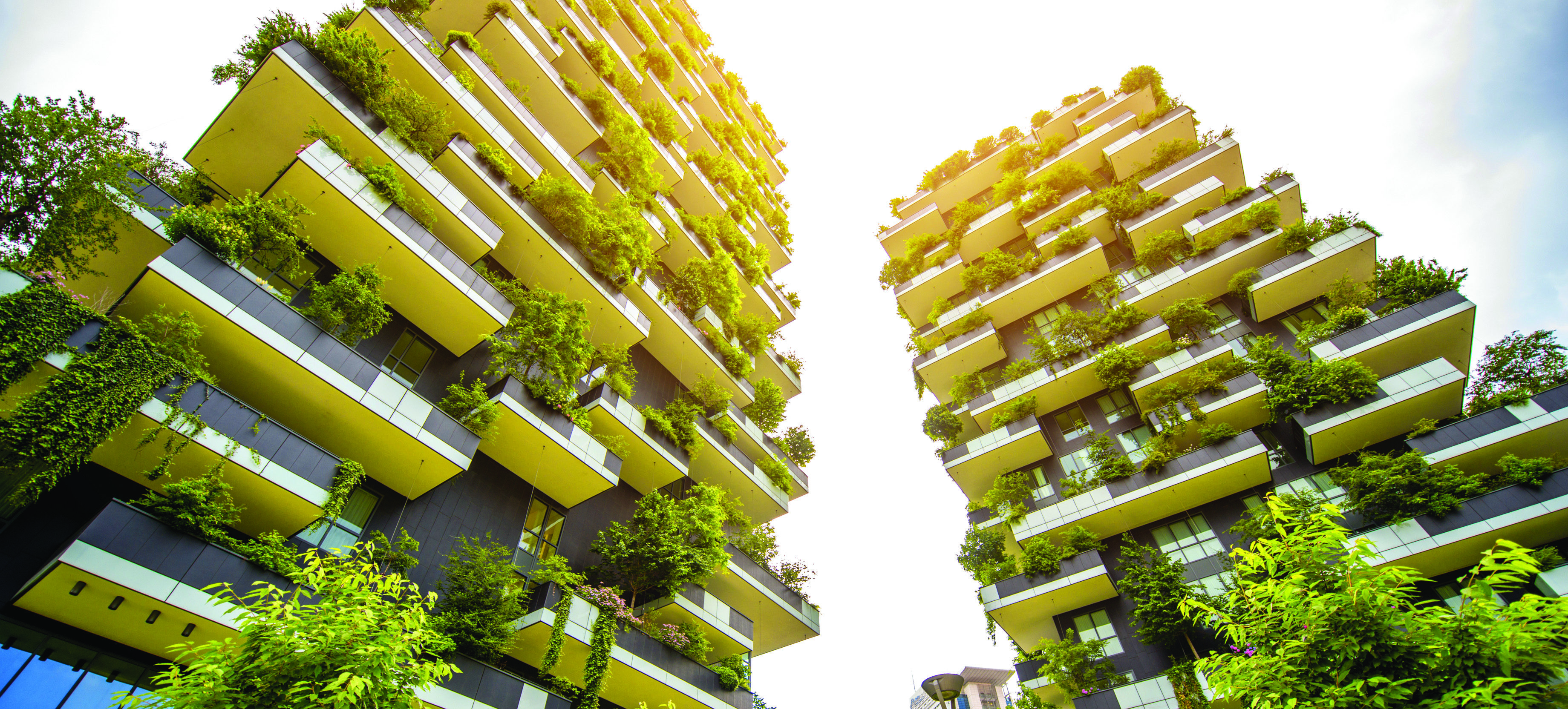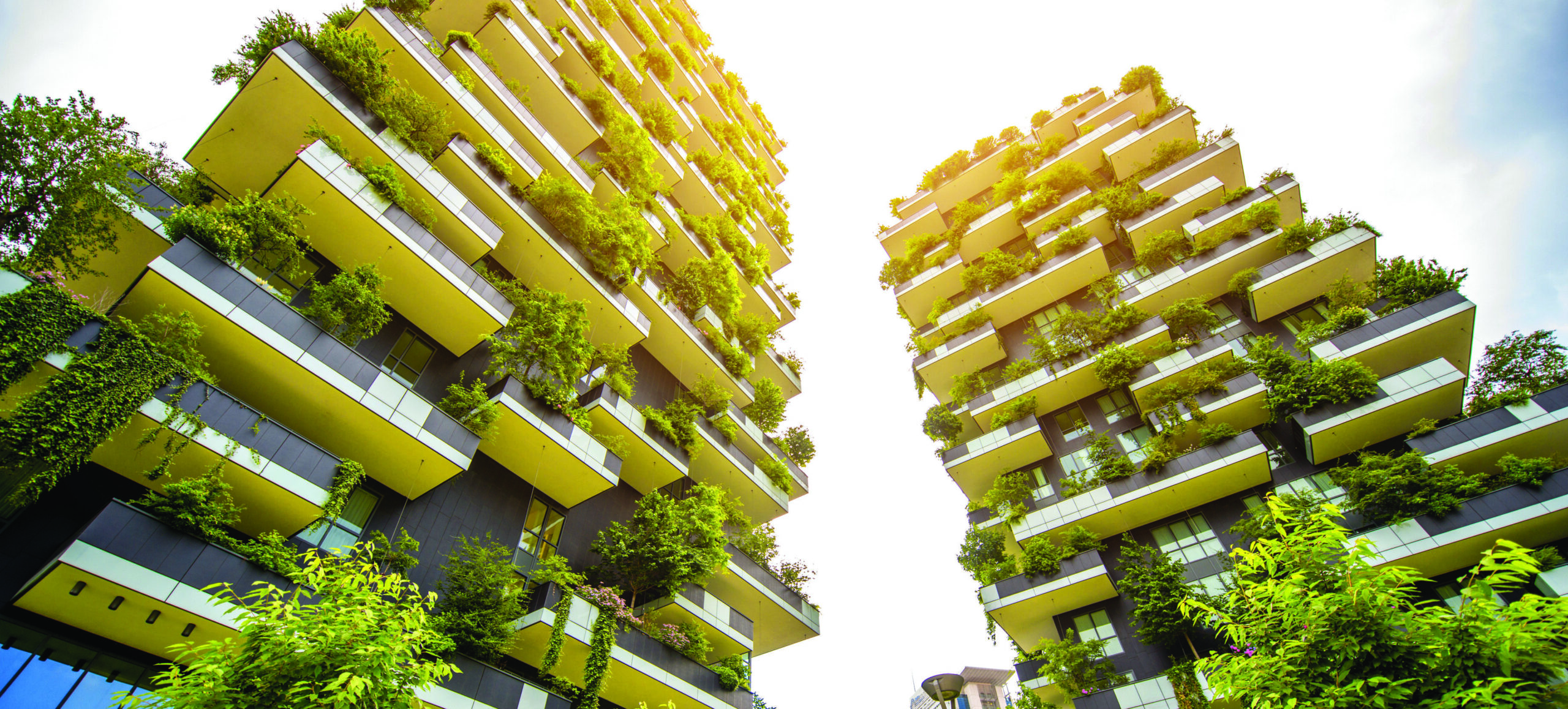
Breathe In and Out Green Architecture
You professional meeting planners are hard to impress—for the very reason that you’re hard to surprise. Your jobs routinely bring you into contact with the latest and greatest. But there we were, a bus full of planners, suppliers and seasoned Smart Meetings staffers, gaping out the windows in Scottsdale, Arizona.
And what was the object of our fascination? It was an apartment building, four or five stories tall, with terraces at each level. It was remarkable for one thing only—much of the exterior of the building was clad in living, breathing green. We’re talking shrubs and small trees. What we were seeing was an example of a recent trend in green architecture—forest buildings, which are also known as vertical forests.
Related: 4 Feel-Good Benefits of Outdoor Meetings
These “forests” are meant to reduce outside air pollution and produce clean oxygen. Plus, they look totally cool. The earliest example, Bosco Verticale, consists of two residential towers—18 and 26 stories high—in Milan. The exterior facade features 21,000 plants, including 800 full-sized trees. In 2014 it was awarded the International Highrise Award from finalists in 17 countries; at a ceremony at Illinois Institute of Technology in Chicago in 2015, it was named Best Tall Building Worldwide by Council on Tall Buildings and Urban Habitat.
“Cities occupy only 2 percent of our planet’s land mass, but account for 75 percent of the production of carbon dioxide pollution, the main cause of climate change,” the project’s architect, Stefano Boeri, said in a recent interview with Climate Home News website. “Plants are the best defense against these polluting factors.”
His idea was met, not surprisingly, by skepticism and resistance at first. And he faced the challenge of doing something untried. He even tested trees in wind tunnels to choose the best varieties for the upper floors.
“We continue to discover new things,” he says. “For one, we had the clear demonstration of the intelligence of plants as our trees grow and come very close to the ceiling of the overlying terraces, but never touch them. Also, we found that they widen up to get closer to the neighboring plants without ever overlapping.”
More: Green Meeting Resource Guide
Ladybugs were introduced to control pests without using toxic chemicals. Birds were attracted to the ladybugs. “Swallows, now very rare in Milan, have nested on our buildings,” Boeri says. “The vertical forest has become a new and varied ecosystem.”
Other vertical forests have since arisen in China, Japan, South America and Northern Europe. Boeri’s firm has even devised a plan for a 30,000-resident, sustainable community, Liuzhou Forest City, in southern China. He estimates its 40,000 trees and almost 1 million plants will absorb nearly 10,000 tons of CO2 per year and produce 900 tons of oxygen.
Other examples already built include Oasia Hotel Downtown in Singapore, designed by the firm WOHA, which is based there. It sports a red-mesh exterior lattice that hosts 21 species of tropical vines; the firm describes it as a “perforated, permeable, furry, verdant tower of green.”
In Taipei, on the island of Taiwan, Belgian “archibiotect” Vincent Callebaut designed a residential complex inspired by the double-helix structure of DNA. Trees, plants and shrubs cascade from open balconies. “This is a prototype of a carbon-absorbing green building that can fight against global warming,” Callebaut told The Daily Beast, “while the balconies include gardens for vegetables and medicinal plants for the inhabitants.”
People, not just the climate, benefit from vertical forests. Those affected by fear of heights, for example, are soothed by the leafy presence of plant life on the upper floors. While planners probably won’t be festooning entire building facades with trees, they can help assure the well-being of attendees by decorating interiors with potted plants and trees.
Research has long indicated that interior “plantscaping” makes people better learners who feel good and are more productive.
And just as vertical forests improve air quality outside, indoor plantings reduce the level of carbon dioxide, pollutants and dust, and increase comfort with a mild elevation of humidity. Plants also absorb echoey sound in acoustically live spaces (those that have hard surfaces, such as many exhibit spaces and ballrooms).




